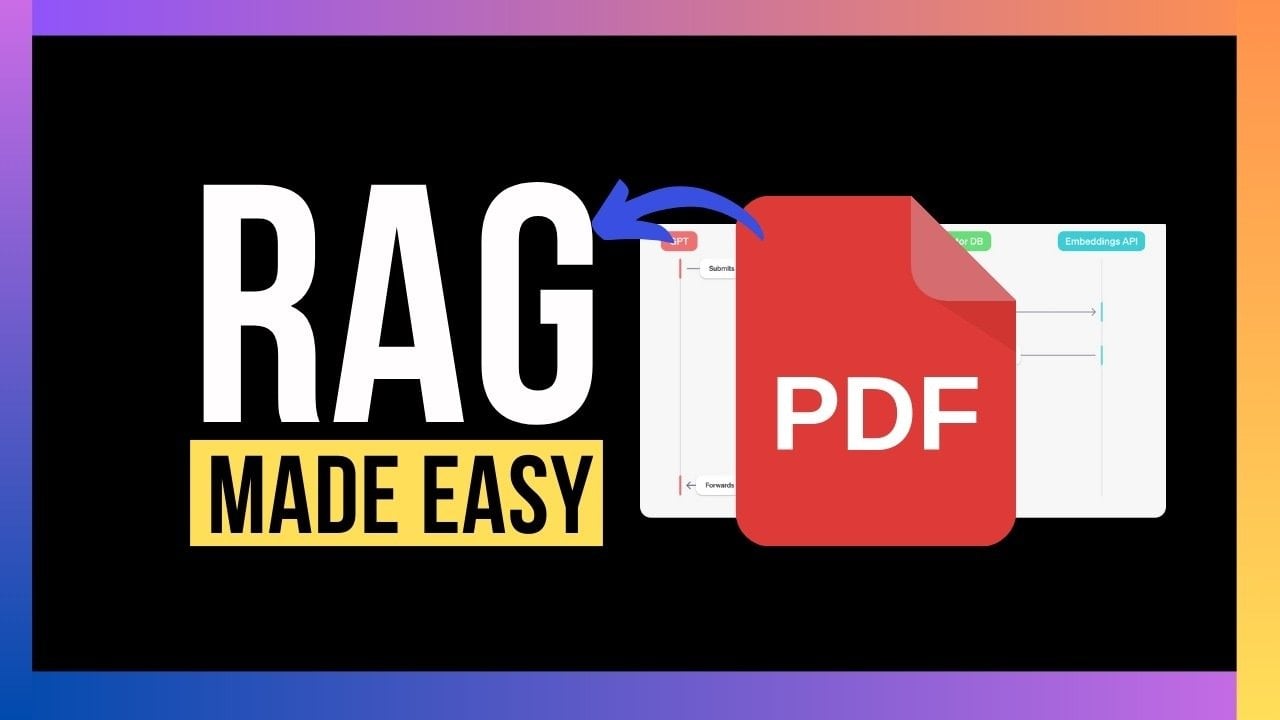Guide to Automating RAG Systems Using the OpenAI Responses API

Streamlining RAG Workflows with the OpenAI Responses API
The OpenAI Responses API is a powerful tool that simplifies the process of building Retrieval-Augmented Generation (RAG) systems. By automating key components like document chunking, embedding, and retrieval pipelines, this API allows developers to focus on creating impactful applications without the complexities of managing intricate infrastructure. While it offers significant advantages, the API also presents considerations regarding cost, performance, and evaluation that are crucial for real-world applications.
Understanding the OpenAI Responses API
Key Features
The OpenAI Responses API is a major upgrade from the Assistance API. This new version brings a range of built-in tools and supports the creation of custom tools, making it an adaptable solution for RAG needs. Here are its key features:
- File Search Capabilities: Quickly locate and manage documents.
- Automated Vector Storage: Streamlines the embedding and retrieval processes, ensuring that data is stored efficiently.
- Support for Custom Tools: Offers flexibility to develop tailored solutions that meet specific project requirements.
The goal of the API is to abstract away technical difficulties, enabling developers to concentrate on building effective workflows.
Efficient Document Processing
One of the standout features of the Responses API is its ability to effectively process and store documents in vector formats. You can upload files in formats such as PDF directly to OpenAI’s servers, where they will be automatically chunked and embedded into vectors. This feature enhances efficiency by eliminating the need for manual preprocessing.
Benefits of this Process Include:
- Automated Management: The API takes care of chunking and embedding.
- Broad File Compatibility: Supports multiple file formats for various industries.
- Quick Retrieval: Enhances system responsiveness with efficient storage.
This automation allows developers to focus on refining their systems instead of getting bogged down in document handling.
Cost Considerations
While the Responses API saves time and effort, its pricing structure demands careful evaluation to ensure alignment with one’s budget. The costs are broken down as follows:
- Vector Storage: $0.10 per GB per day; the first GB is free.
- Tool Calls: $2.50 per 1,000 calls, which can add up based on usage.
For smaller projects, these costs may be reasonable, but larger applications can see expenses rise quickly. A comprehensive cost-benefit analysis can help determine if the API offers sufficient value compared to alternatives.
Enhancing Retrieval and Response Generation
The Responses API is designed to combine efficient document retrieval with large language models (LLMs) like GPT-4. Its modular design allows integration of various tools, such as file and web searches, improving output accuracy.
Practical Applications of this Functionality:
- Dynamic Knowledge Retrieval: Suitable for industry-specific queries.
- Context-Aware Responses: Supports users with detailed answers relevant to their needs.
- Improved System Performance: Incorporating multiple retrieval tools enhances overall functionality.
The API’s flexibility makes it a strong contender for diverse applications ranging from customer support to research initiatives.
Evaluation for Optimal Performance
To ensure that a RAG system works effectively, careful evaluation is key. The Responses API encourages thorough testing of both retrieval and generation processes, using metrics such as:
- Recall and Precision: To gauge accuracy in retrieving relevant information.
- Response Relevance: To confirm that outputs meet user expectations.
- Faithfulness: Ensuring the correctness and reliability of generated responses.
Best Practices for Evaluation:
- Engage with diverse datasets to test accuracy.
- Measure response relevance and continuously improve based on user feedback.
- Incorporate human oversight to validate results and limit potential biases.
Evaluating these factors rigorously enhances the performance and reliability of the system.
Multifaceted Applications
The versatility of the Responses API opens up many use cases across various industries, where efficient and quick responses are essential. Some examples include:
- Customer Service: Automating answers for frequently asked questions improves support efficiency.
- Research: Analyzing and extracting information from large datasets speeds up projects.
- Content Creation: Producing accurate and contextually relevant content based on user inquiries.
These applications demonstrate the API’s potential to foster innovation and efficiency across many domains.
Addressing Challenges
Despite its numerous advantages, there are challenges associated with the Responses API. Some limitations include:
- Lack of Transparency: Difficulty in fully controlling ranking and chunking processes.
- Need for Human Oversight: Essential for validating datasets and ensuring their accuracy.
- Potential Biases: Dependence on LLMs for evaluation may skew results, necessitating alternative assessment methods.
To effectively utilize the API, developers should adopt careful measures to monitor and address these challenges proactively.
Future Prospects
The OpenAI Responses API paves the way for future innovations. Potential developments such as integrating multi-agent systems could refine workflows, while enhancements in evaluation techniques may boost response quality. By embracing these advancements, developers can unlock new opportunities for creating intelligent and scalable solutions.






